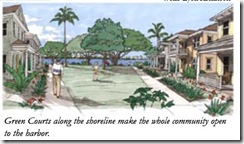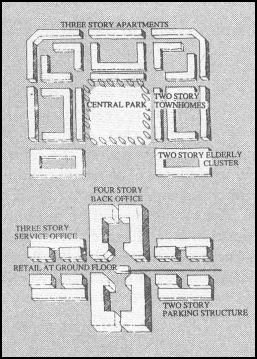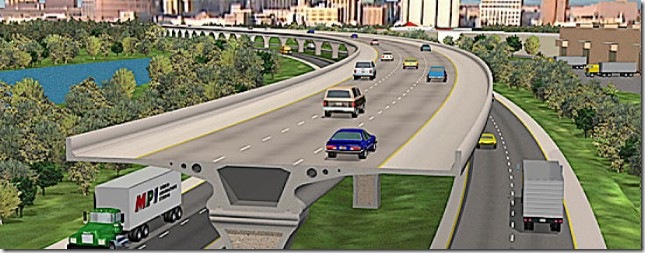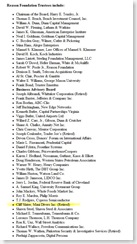Saturday, May 24, 2008
Development Oriented Transit
Someplace people are surely laughing at Honolulu and its transit "plan."
In November, some people may cry. Most of them will be developers who suddenly find their dreams of a new yacht or third summer home burst like the real estate bubble on the Mainland. They'll cry as people vote to stop this fiasco called "rail."
If that happens, we should throw the biggest party Honolulu has ever seen. Break out the fireworks, celebrate the saving of billions of taxpayer dollars for a train that doesn't know where it needs to go even as the first spike is about to be driven.
I did sign the Stop Rail Now petition, and it's not because I'm against public transit. In fact, I feel strongly that the HOT lanes that the anti-transit group advocates instead is a terrible idea.
I signed because I want this circus to end. Then we can start planning our community the way we, the people, would like it to be.
This rail thing has never been the people's plan. The City grudgingly held public information sessions but wouldn't listen. Over and over, under questioning at City Council hearings, people testified that they spoke out but were not heard.
The entire process lacks popular legitimacy. It lacks legitimacy because it isn't a plan for our benefit. It's a huge handout to developers constructed piecemeal out of strange City Council votes and the mayor's intention to shove his plan down everyone's throats. If you go out where the westernmost station is planned to be, I'm told that there is nothing there. It will all have to be "developed." So you figure out who profits.
People must be laughing because the vote of a single city councilman (Romy Cachola) can shift the route.
People must have laughed as Mufi added in the airport route yesterday (Hannemann Proposes Rail Spur To Airport), possibly in an attempt to fend off the growing wave of petition signers who could scuttle the entire project—along with his ambitions for higher office.
Yes, the petition drive is gaining momentum (the magic word for 2008). I don't know if they'll be successful in gathering all the signatures they need, but I've seen people fight to sign their names on the dotted line. It could be successful.
If the stop transit question gets onto the November ballot, it could easily pass into law. Then Mufi's supporters, who have dutifully topped off his campaign coffers even though he's not running for anything (yet), will blame him for not delivering the development profits and construction contracts they are salivating over. He was supposed to make rail happen for them, but this petition could ruin everyone's investment in him.
Look, it's 2008 and the developers are impatient. They're paying more for fuel for their yachts and sashimi for their banquets, just like the rest of us. They really want Mufi to let them get started in 2009.
But when you read this in the paper, didn't you get the idea that, um, we're not ready yet?
Hannemann has been committed to steel wheel on steel rail technology for the project. The City Council has tried several times to vote on its technology preference but has been unable to reach a consensus.
The route the transit project will follow has also been a major point of contention. [Honolulu Advertiser, 5/23/2008]
Planning a community comes first
What's wrong with thinking first about the quality of civic spaces in Honolulu, where we want to walk, where we want to drive, where we want to ride? And for what distance, of course. Sounds basic. It is. You do it before planning a transit system.
Other cities do it, so can we.
I'd like to take you on a trip to another place, a place where citizens and planners get together and decide what their city will be like in the future. Then we'll come back to Honolulu and its transit system.
Here's a blurb for a book co-authored by my favorite urban planner, Peter Calthorpe:
The Regional City: Planning for the End of Sprawl By Peter Calthorpe, William Fulton, Robert Fishman
Most Americans today do not live in discrete cities and towns, but rather in an aggregation of cities and suburbs that forms one basic economic, multi-cultural, environmental and civic entity. These “regional cities” have the potential to significantly improve the quality of our lives -- to provide interconnected and diverse economic centers, transportation choices, and a variety of human-scale communities. In The Regional City, two of the most innovative thinkers in the field of land use planning and design offer a detailed look at this new metropolitan form and explain how regional-scale planning and design can help direct growth wisely and reverse current trends in land use. The authors: discuss the nature and underpinnings of this new metropolitan form present their view of the policies and physical design principles required for metropolitan areas to transform themselves into regional cities document the combination of physical design and social and economic policies that are being used across the country consider the main factors that are shaping metropolitan regions today, including the maturation of sprawling suburbs and the renewal of urban neighborhoods. Featuring full-color graphics and in-depth case studies, The Regional City offers a thorough examination of the concept of regional planning along with examples of successful initiatives from around the country. It will be must reading for planners, architects, landscape architects, local officials, real estate developers, community development professionals, and for students in architecture, urban planning, and policy.
You're probably not going to buy this book, but Peter has a great website. Let's go there.
Please explore his site. You'll see transit plans for Austin Texas that incorporate the need for cars.
But more important, look at how cities like Portland are planning their future growth. Here's something on Metro Vision 2040:
In the Vision 2040 scheme, the Town Center Mall is transformed into a new urban center that corresponds to the scale of Portland's downtown street grid. Multi-story, mixed-use buildings surround parking lots on tree-lined blocks.
Please take a moment to explore his plans on the website.
 His firm even did some planning for the military in Hawaii. See Hawaii Regional Military Housing Privatization (pic credited to Wolff Lyon Architects).
His firm even did some planning for the military in Hawaii. See Hawaii Regional Military Housing Privatization (pic credited to Wolff Lyon Architects).
 I wrote about Calthorpe's "Pedestrian Pockets" concept (dating from 1988) in an earlier article 'way back in 2006. I hope you'll take a moment to click on the link and revisit that post. It's profusely illustrated.
I wrote about Calthorpe's "Pedestrian Pockets" concept (dating from 1988) in an earlier article 'way back in 2006. I hope you'll take a moment to click on the link and revisit that post. It's profusely illustrated.
Back to Honolulu
After exploring the Calthorpe site you have a basis for comparison with Honolulu's process.
The current spat over selection of mass transit technology for Honolulu and the growing opposition to the whole thing illustrates that the process is, at best, completely faulty. Does anyone seriously think that this is the way a sensible city government solves its public transit problems? For example, no planning went into this decision, yet the future of our communities was decided for political reasons only:
Hannemann allies unexpectedly had swapped the airport link for Salt Lake Boulevard last Wednesday to win a crucial swing vote from Councilman Romy Cachola that kept the project alive.
The key word is "unexpectedly." That's exactly the opposite of sound city planning. I'm sure that Calthorpe would not approve.
Oh, this one is even better. Romy is at it again:
Transit stop sought for Mapunapuna
Landowner says rail stop there could spur redevelopment in area
...
A train station could help redevelop the area for increased industrial, commercial and residential use, according to Reit Management & Research, which manages 150 acres of Mapunapuna land for Massachusetts-based HRPT Properties Trust. [Honolulu Advertiser, 5/14/2008]
At least this article is honest about the push for development. Doesn't "REIT" usually mean "Real Estate Investment Trust?"
No one knows what they are doing
The present assumption is that everyone knows what they want and so they can simply vote on it. The City Council is supposed to know what transit technology it prefers and to select it now. The newspaper thinks it has the noise question figured out, but others dispute it. Do you trust that these guys really know what they're talking about at all?
If rail opponents are successful in getting the question on the ballot, then voters will be expected to know whether they want a transit system. In truth, we haven't a clue. We've been left out.
This is what happens when developers and development are the prime movers for a public works project. Yes, what we have is not "Transit Oriented Development." It is more accurately "Development Oriented Transit."
We, the commuters, bicyclists and pedestrians of Honolulu, are not the ones driving this project. We are, very much, being "railroaded." If left to us, working with experts, with the City Council and with the city administration, it's unlikely that we would be at the point of choosing a single technology so soon.
The Advertiser editors have advised we let the circus go on and just take out our frustrations in the voting booths this November. Like, sure, that helps arrive at a good decision somehow.
It is the same as saying we will give these folks our blank check and let them choose what's best for us. With a recession underway there is even less reason for us to do that. We may change our priorities any time soon, particularly if Hawaii's economy takes a hit. And it could.
The public should lead in planning
Does writing this mean that I am against rail? To clarify, my training and background tell me that precipitous decisions can be costly. To commit to rail or to HOT lanes because someone is shouting at you to do it, or to support political ambition, is just much too risky. It's like "Ready, fire, aim!" It might work, but probably not.
What's missing is the investment in time and effort necessary to develop sound public policy through collaboration, exploration, research and debate. Going through a cognitive process does not guarantee agreement, but it is essential to the possibility of arriving at a sound conclusion. In such a deliberative, collaborative process, selection of the transit technology might reasonably occur towards the end, not at the beginning, of the effort.
It's critically important that planning be carried out in a collaborative manner if the process is to be legitimate. At present, the city government is divided against itself and against the people.
Repeated testimony given to the the City Council has pretty much established that feedback from the public was not sought by the administration. Instead, the public was "informed" of the decision to select rail.
All interested parties must be involved from the beginning. Having contributed to the planning, participants are in a position both to understand and support a project's rationale.
It's also necessary to resist the pressure of developers, who seem to universally prefer rail and will pay to get it. Why rail? I'm not sure exactly, but perhaps it has to do with the permanence of that rail station. They'd rather build near something that won't move, and a bus route can be easily changed just by shifting some benches and signposts. In other words, they hate the flexibility that many of us would like to see in our transit system. So they are insisting on steel rail.
Instead of encouraging extensive public discourse, decisionmaking is being buffeted by advocacy. It's being pushed and pulled by those who feel that their plan is best (for them) and so they marshal forces to push for their scheme. Instead of working through creation of a sensible urban plan that the people stand behind, advocates are investing in PR to influence government and naive public opinion. It will be sad if Honolulu puts in a transit system based on who can spend the most money on PR (see: Public relations firms feed at city-funded transit trough), or who can contribute the most to politicians' campaign war chests.
The current process is characterized by rancor, by accusations, by conflict and by misunderstanding. That's a heck of a way to either plan a better community or to spend huge chunks of public money. The newspapers document disagreement and deception instead of sound reasoning and competent planning, letters to the editor label one side or the other idiots. We're getting lots of heat but little light.
While the mayor insists he can push ahead with his personal transit scheme, it's clear that neither the City Council nor at least a substantial part of the public agree. Should he try to force his train down the Council's throat he will sacrifice the possibility that citizens will agree that their interests come first rather than the interests and ambitions of the mayor and his buddies:
Transit firms backing mayor
Contractors have contributed $163,000 toward his re-electionContractors on Honolulu's $3.7 billion transit system and their employees have contributed $163,000 to Mayor Mufi Hannemann's re-election campaign.
Hannemann hopes to win a second four-year term on Nov. 4 and, so far, has no opponents.Between November 2004, when Hannemann was elected, to December 2007, he has raised $2.26 million for his campaign, and $163,000, or 7.2 percent, has come from contractors involved in the planning of the project, their employees and families, according to an Advertiser search of Hawai'i Campaign Spending Commission records. [Honolulu Advertiser,5/4/2008]
Those who deceive best could win
Anyone who feels deceived either by the technology proponents or by the rail opponents can find support for their position. On one side we have the deceptions that traffic will be abated, that the project can be accomplished at affordable cost, and that it will eventually, if not immediately, go where people would like it to go. Oh, and rail is supposed to enhance neighborhoods, not ruin them, which leads us to deceptions around noise and hulking structures in the sky.
The whole issue of noise is problematic. If there are bells or chimes when doors close, it's noise. If there are announcements by loudspeaker, it's noise. If trains release air from their brakes when they stop, it's noise. Given time, we could estimate noise levels quite accurately and figure that into our decisions, but instead, since the methodology is advocacy, all the advocates are shouting about how quiet their systems are. Speaking of noise!
Opponents of rail are responsible for deceptions of their own. One is that HOT lanes are not as noisy as quiet modern trains whether steel or rubber wheeled. Anyone living near the H-1 (as I do) can tell you that the noise is incessant. At least between trains there would be some quiet.

Another deception can be seen on the Stop Rail Now website. Their happy alternative illustration is not anything you will see here in Honolulu, and it's as deceptive as some of the artist illustrations of the proposed rail system.
Note that the truck on the right casts a shadow but that the elevated guideway strangely does not. Note the placid lake and green buffer zones in the illustration. Dillingham Blvd. doesn't look like that. Note that there are no streetlights. And of course, no guardrails or noise abatement, those would be too ugly to include.
Add all that stuff in, and you'll have sympathy for anyone living near the structure. Their quality of life will simply be diminished by it.
Businesses may not thrive in its shadow. Everyone will cringe as cars use the guideway as a speedway, knowing that traffic laws are seldom enforced in Honolulu. Who needs a competition track when for a few bucks you can get onto the HOT lanes, cut out your muffler and race your friends to Aloha Stadium?
Instead of encouraging car pooling or the use of multiple-occupancy vehicles (whether cars, vans, or buses) which have the potential to reduce traffic in the city as well as cut down on pollution and energy use, the HOT lanes scheme sells speed to the rich. Cars using these lanes will be primarily single-occupant vehicles whose drivers can afford to pay.
Come to think of it, the BMWs and Lamborghinis plying the toll road aren't as noisy as the cars you and I drive, so maybe noise barriers wouldn't be such a big deal.
 One of the longest-running deceptions has been the omission, in countless op-ed articles in the Advertiser, of HOT lane proponent Cliff Slater's deep involvement with the Libertarian belief tank Reason Foundation, which pushes for HOT lanes and privatization of public assets. He's been a rail opponent with a one-track mind. The newspaper should have noted that he has been listed as a trustee of this organization as well as a member of the Reason Foundation's Business Advisory Board. But not a word of this in his numerous articles pushing HOT lanes:
One of the longest-running deceptions has been the omission, in countless op-ed articles in the Advertiser, of HOT lane proponent Cliff Slater's deep involvement with the Libertarian belief tank Reason Foundation, which pushes for HOT lanes and privatization of public assets. He's been a rail opponent with a one-track mind. The newspaper should have noted that he has been listed as a trustee of this organization as well as a member of the Reason Foundation's Business Advisory Board. But not a word of this in his numerous articles pushing HOT lanes:
Cliff has not hidden his association with the Reason Foundation, though the Advertiser has. If you'd like to see how strongly these folks are pushing for HOT lanes and how successful they've been, try this simple Google search.
It's not necessary to agree that HOT lanes are better for Honolulu. You can just sign the petition. If this rail juggernaut can be stopped, we'll have time to stop and plan and maybe do something right.
Whether a train, bus, light rail, more roads (HOT or not) or bikeways are what we want is something we should be able to decide cooperatively and with expert advice. Neither developers nor libertarian think tanks should be allowed to determine for us what Oahu will look like in the future. It's for us to decide.
I'll close with a song. It was 1945 and there was a train in Honolulu!
Yes, Oahu once had a train. With the help of a pusher locomotive, it even made its way uphill to Wahiawa (try that, maglev!). In this song, a train figures into a short tale of elusive love.
Click either link below to hear this arrangement from the past. A Google translation into English is here. Original French is here:
Refrain
Nous nous sommes aimés
Et c'est un vieux curé
Qui nous a mariés
À Honolulu
Notre première nuit
Ne fut que frénésie
Fantaisie et folie
À Honolulu
Mais dès le lendemain
Vous aviez pris le train
Je vous cherchais en vain
À Honolulu
Et deux trois jours après
Nous étions divorcés
Simple formalité
À Honolulu.




Post a Comment
Requiring those Captcha codes at least temporarily, in the hopes that it quells the flood of comment spam I've been receiving.